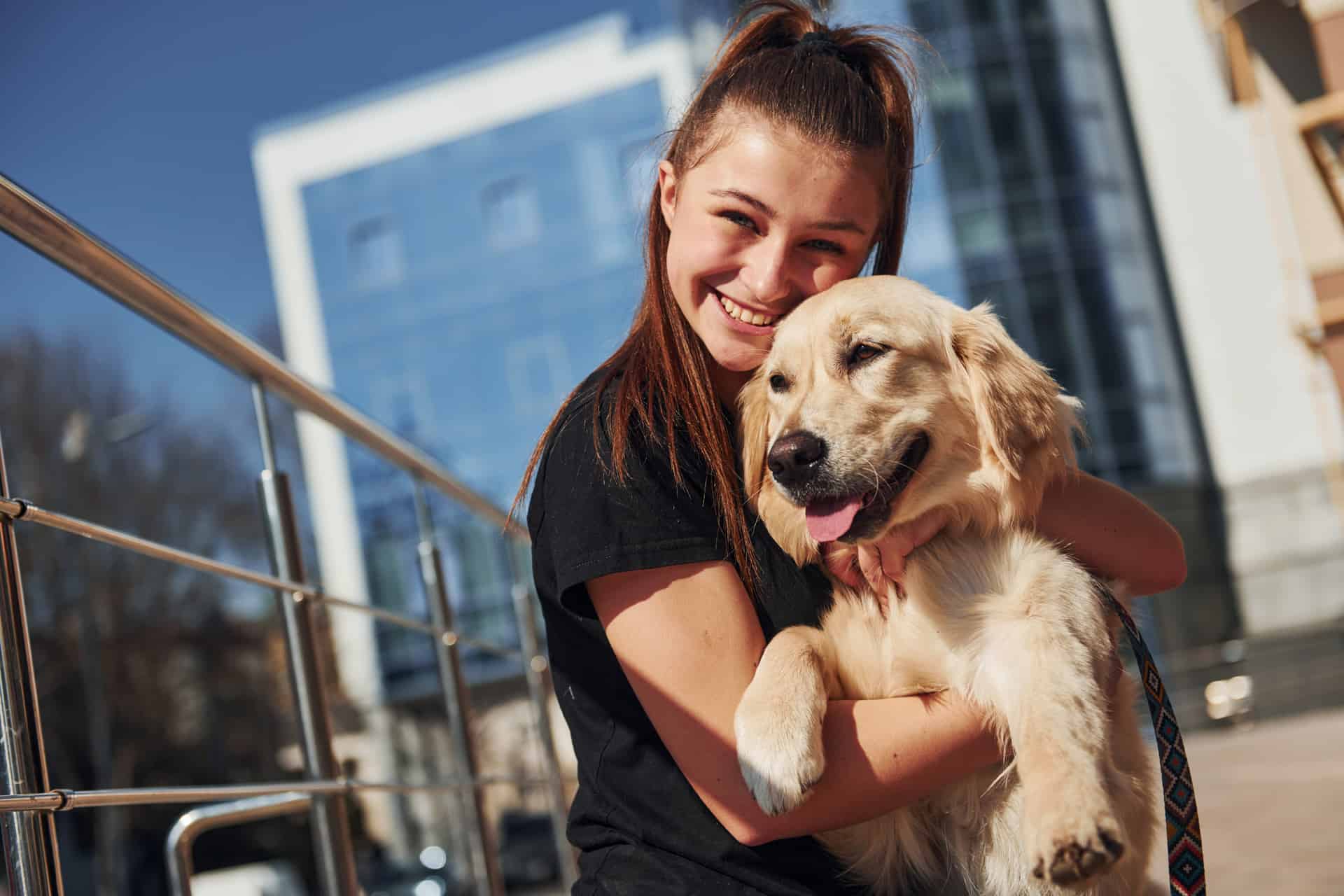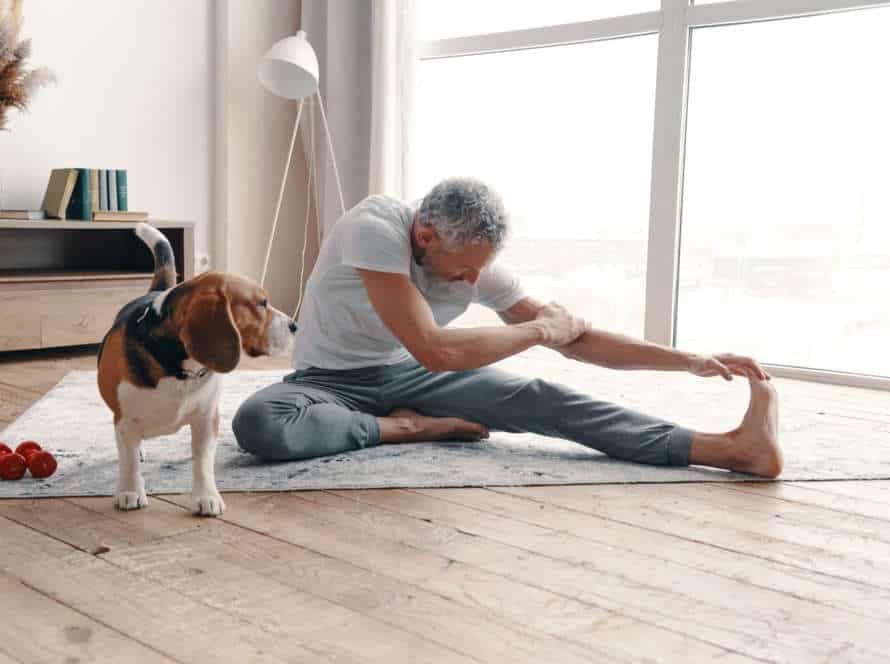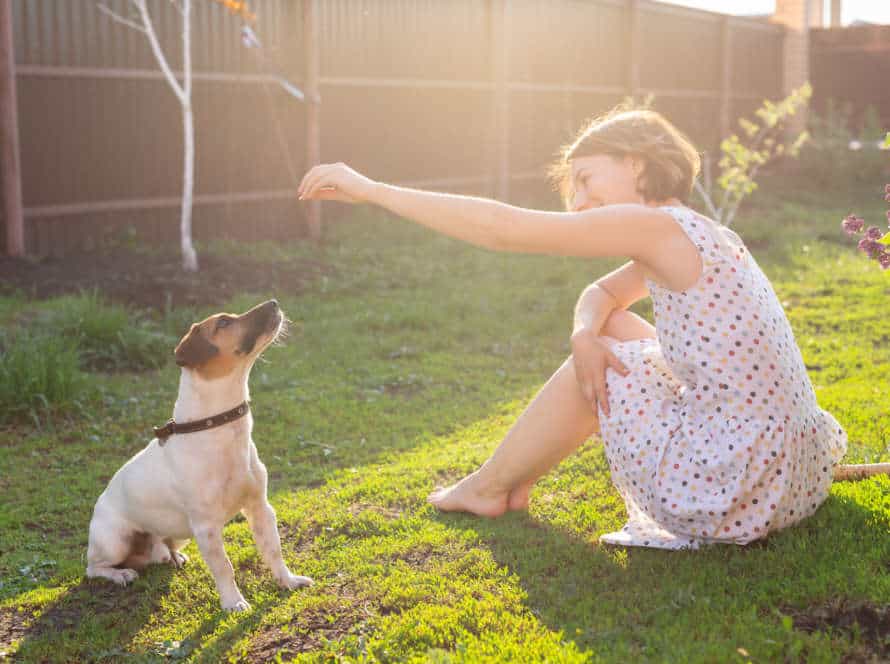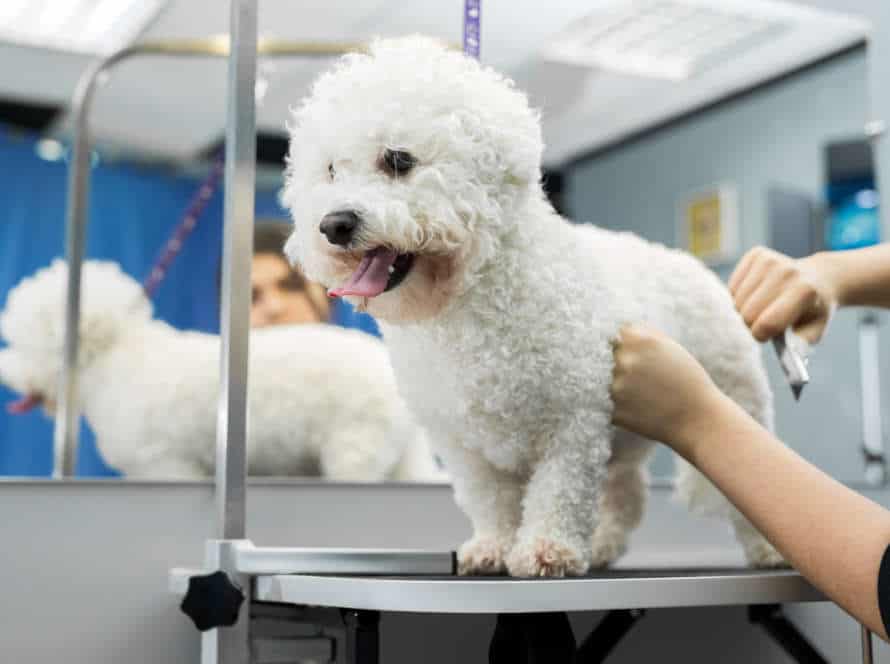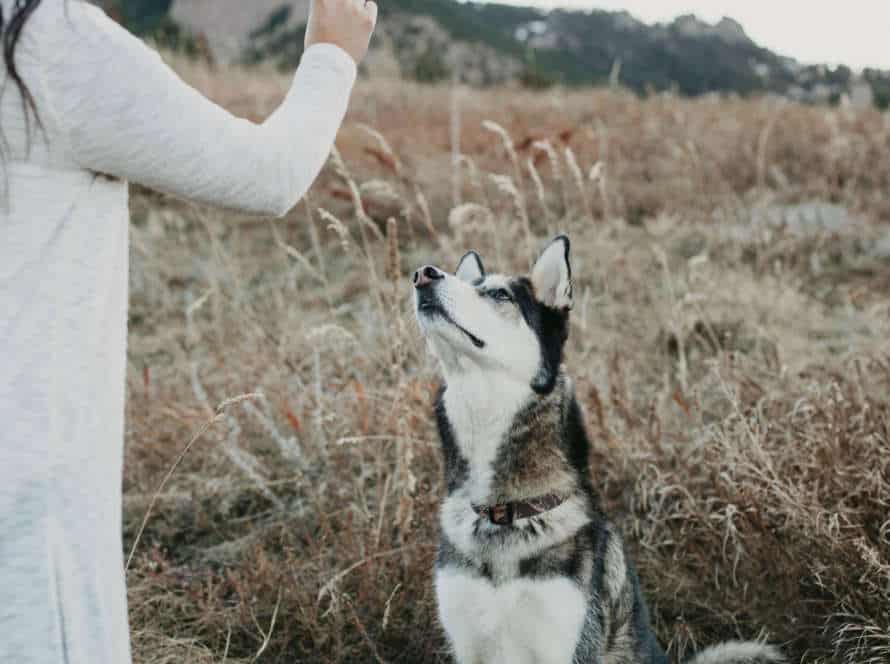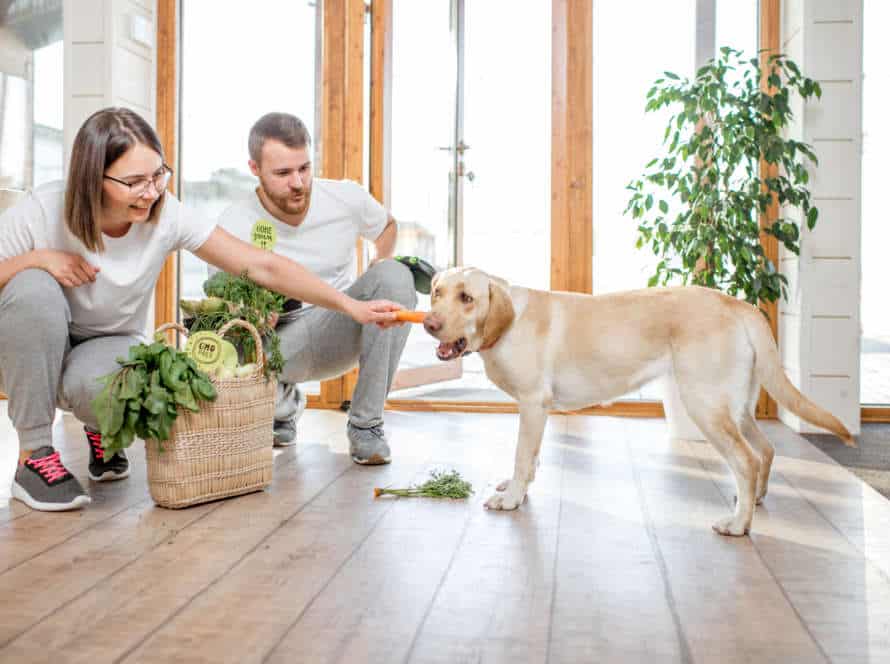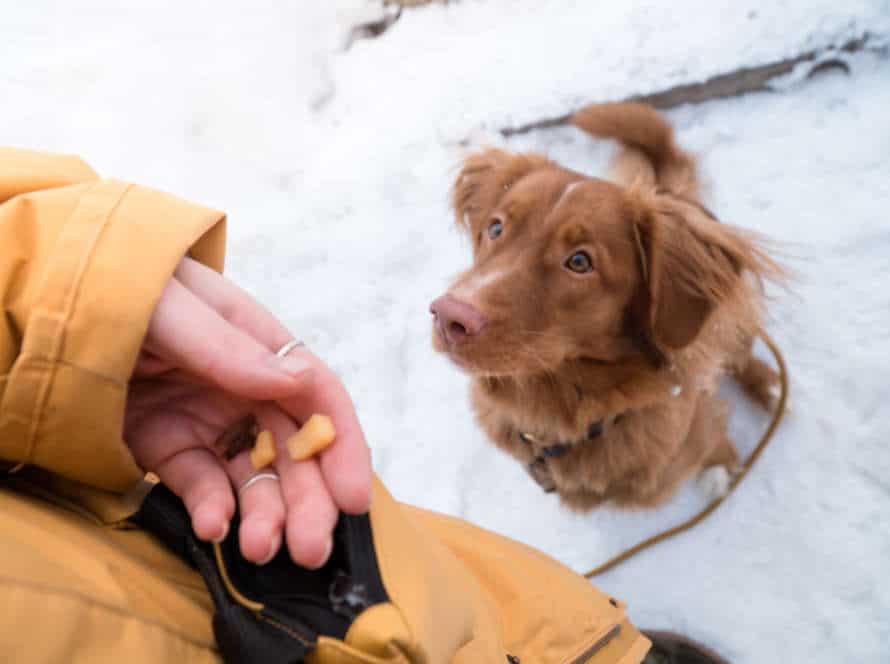A Strong Foundation: Why Trust Matters in Dog Training
Trust is the base of any successful dog training program. It helps build a strong bond between you and your pup. Here’s why it matters:
- Creates a positive learning environment: When your dog trusts you, they feel safe and motivated to learn.
- Strengthens the bond: Building trust takes time, effort, and consistency. This strengthens your connection with your dog.
- Improves behavior: When your pup trusts you, they’re more likely to follow your commands. That leads to better behavior.
- Reduces anxiety and stress: Dogs that trust their owners are less likely to feel anxious or stressed. That keeps them emotionally and mentally healthy.
In conclusion, trust is crucial for success in dog training. It’s also important for creating a happy and healthy relationship with your pet.
Building Trust with Your Dog
Dog training success requires trust. To build it, you need patience and consistency. Here’s how:
- Create trust.
- Maintain trust.
It takes time, but it’s worth it. With the right approach, you’ll get there!
The Importance of Trust in Dog Training
Trust is essential for successful dog training. Dogs are pack animals; they need to feel safe and secure in their environment. If they don’t sense trust from their owner, they won’t trust them. Why is trust so important in dog training?
- It helps form a strong bond between you and your dog, making the training more effective.
- It sets up a safe, nurturing environment for learning.
- It allows you to teach new behaviors without causing fear or anxiety.
To build trust with your pup, you must be consistent, use positive reinforcement, and be patient and clear in your communication. Once trust is established, training can be an enjoyable and fulfilling experience for both of you.
Pro tip: Building trust takes time and effort. But once it’s there, it can really improve the owner-pet relationship.
Exercises to Build Trust with Your Dog
Trust is essential for successful dog training. Here’s how to build trust with your pup:
- Eye Contact – Train your pup to look at you before giving treats or cuddles.
- Gentle Touch – Touch your furry friend in gentle, non-threatening spots like the chin and chest.
- Forced Interaction – Don’t force your pup into uncomfortable situations – this will break trust.
- Treat Rewards – Use treats with positive reinforcement to reward good behavior.
Do these exercises consistently and you’ll have a strong bond of trust with your pup. Pro tip: Trust takes time and patience. Don’t expect overnight success and reward good behavior.
The Role of Positive Reinforcement in Trust Building
Positive reinforcement is a must for building trust with your pooch. It’s the technique of rewarding good behavior with something positive, like treats, praise, or playtime. This teaches your dog that good behavior has good outcomes, which encourages them to keep being good.
Here’s why positive reinforcement is key:
- It creates a strong bond of trust between you and your dog.
- It encourages desired behaviors and stops unwanted ones, without punishment or fear.
- It lets your dog learn at their own pace, in a stress-free and fun way.
- It makes training enjoyable for both you and your dog.
By using positive reinforcement, you can develop a strong foundation of trust with your pup. This will help for all future training and interactions.
Training Techniques that Build Trust
Trust is a must for dog training that succeeds. No trust? Dogs won’t learn as well and may not even obey commands. With trust, though, dogs become more willing to listen and learn. Therefore, let’s look at training techniques to create trust.
Using Clicker Training to Build Trust
Clicker training is a reinforcement method that builds trust between canines and their owners. It works by using a clicker to mark good behavior. This signals to the dog that obedience is rewarded, inspiring them to repeat it.
Below are the steps for clicker training to build trust:
- Begin with easy commands like “sit” and “stay“.
- Click the clicker when your pooch follows the command.
- Offer treats and compliments each time you click.
- Gradually increase commands, expecting more complex responses as your pup feels more secure.
- Remain patient and consistent with your training. Eventually, your dog will have a stable relationship with you, built on trust.
Relationship-based Training
Relationship-based training is all about trust and a strong bond between you and your pup. Trust is very important in dog training.
Here are some tips to help you get there:
- Positive Reinforcement: Reward good behavior with treats, praise, and playtime. This strengthens the bond between you and your pup.
- Consistency: Use the same commands and reinforce good behavior. This creates a sense of reliability for your pup.
- Clear Communication: Use both verbal and nonverbal communication. This helps build trust and understanding.
- Pro tip: Don’t forget that relationship-based training takes time and patience. Be consistent, use positive reinforcement, and communicate clearly with your pup to build a better relationship over time.
Slow and Steady Wins the Race: The Importance of Patience in Building Trust
Building trust in dog training is not an easy task! It takes time, effort, and most importantly, patience. Dogs are smart animals with different personalities and experiences which can affect how they react to training.
To help build trust with your pup, try these techniques:
- Positive reinforcement: Use treats, praise, and play as rewards for good behavior.
- Consistency: Have a regular routine and training to make your pup feel safe and confident.
- Body language: Use a calm and assured body language to communicate and avoid fear-based training.
- Listening: Pay attention to your dog’s needs and understand their body language. This helps create a strong bond and trust.
Remember, building trust takes time. Rushing the process or using harsh techniques can harm the trust and relationship you have with your pup. Trust is the base of a successful and happy training experience. Be patient!
Trust and Obedience
Dog training needs trust. To get a great relationship between pup and human, trust and respect must be made. Having trust with your dog will make them obedient and follow the commands. We will talk about why trust is important in dog training and how to get it with your pup.
The Connection between Trust and Obedience
Trust is a must for obedience in dog training. Without trust, obedience can be hard or nonexistent.
Why trust is so important?
- Trust forms a strong bond between you and your pup. It helps communication and training to be more effective.
- A pup that trusts you is much more likely to obey commands and learn new things.
- Trust makes your pup more confident and less anxious. This helps obedience because fear and anxiety can mess it up.
- Trust sets up a positive connection. Obedience is not done out of fear, but out of respect and loyalty.
For success in obedience training, it’s key to build trust with positive reinforcement, consistency and clear communication.
The Difference Trust Makes in Overcoming Behavioral Issues
Trust is key to sorting out doggy behavioral issues. With trust, a pup will obey and respond to teaching more readily. Trusting an owner is better than trying to punish or negatively reinforce them. Establishing trust lets the pup recognize their owner as a leader and be more willing to follow instructions.
To increase trust in your pup:
- Be consistent. Use same commands and rewards for comprehension.
- Positively reinforce. Treats, praise and physical affection can strengthen the bond.
- Spend time. Building trust takes time and patience, so spend quality time with your pup everyday.
By giving trust-building priority in training, it’s easier to tackle behavioral issues and create a positive bond with your pup.
How to Maintain Your Dog’s Trust During Obedience Training
Maintaining trust between you and your pup during obedience training is key to creating a solid base of obedience. Dogs that trust their owners are more likely to follow commands and act positively during training. Here’s how to maintain your dog’s trust:
- Use positive reinforcement such as treats and compliments to award good behavior.
- Don’t use physical punishment or harsh techniques, as these can ruin your dog’s trust in you.
- Stay patient and relaxed during training, and don’t get mad at your dog.
- Take a break if either of you become overwhelmed or stressed.
By building a trusting bond with your pup, you can form a lasting foundation of obedience.
The Consequences of Breaking Your Dog’s Trust
Trust is essential when creating a strong base for dog training. A strong bond of trust between owner and pup is vital to getting successful results. But, if this trust is broken, it can have serious consequences. Here, we will consider the effects of breaking your pup’s trust and how to fix it.
The Long-Term Effects of Losing Your Dog’s Trust
Losing your pup’s trust can have dire consequences for your relationship and future training. Dogs are sensitive creatures, and if they feel betrayed or scared, it is hard to win back their faith.
Broken trust can lead to negative outcomes such as fear aggression, fearfulness, nervousness, and anxiety.
Gaining your dog’s trust is key to successful training. Trust breeds obedience. A trusting dog is more likely to obey commands and take part in activities.
It is important to prioritize your pup’s trust. Be consistent and kind in your interactions. Never use physical punishment or intimidation. Create a safe space for them to thrive.
The Importance of Apologizing and Repairing Trust if Broken
Rebuilding a relationship is key – be it with humans or animals. If you break your pup’s trust, it’s time to apologize and make amends! Here’s what can happen when trust is broken:
- Trust Issues: Your pup may lose faith in you and other humans, becoming less social or more hostile to strangers.
- Behavioural Changes: Your pup could act out, bark too much or be disobedient.
- Insecurity and Fear: Broken trust can make your pup anxious or aggressive.
Pro tip: To repair trust, be patient and consistent. Apologize and show them affection. Use positive reinforcement techniques to help them regain confidence in you.
How to Avoid Breaking Your Dog’s Trust in the First Place
Your pup’s trust is fragile and can be easily broken, causing behavioral issues and damaging your relationship. To stop this from happening, do the following:
- Be consistent with commands and training.
- No punishment-based methods – use positive reinforcement.
- Spend quality time with your pet, make them feel loved and secure.
- Read their body language, respect their boundaries.
- Communicate and listen to their needs to create a solid bond.
Breaking trust can lead to anxiousness, aggression and destruction. So, it’s essential to establish a strong relationship built on trust and respect.
Pro Tip: Use positive reinforcement, be respectful and communicate effectively to keep your dog’s trust. This ensures a strong bond based on love and trust.
Trust Building Exercises for Everyday Scenarios
Creating trust between you and your pup is a must for successful pup training! Building this trust means teaching your pup that you’re reliable in different scenarios. Here’s some trust building exercises you can do daily, to build an unbreakable bond with your dog.
Building Trust on Walks
Establishing trust is the key to successful dog training. Making sure you build trust on your walks is essential. These exercises can help build a strong bond between you and your pup:
- Stop and Go: Teach your pup to focus on you by stopping and starting abruptly.
- Change Direction: Keep your pup focused on you by changing the direction of your walk.
- Eye Contact: Make eye contact with your pup for a few seconds to show trust and confidence.
- Treat Toss: Use treats to encourage your pup to come back to you.
- Walking with Trust: Hold the leash loosely and show your pup you trust it to follow you.
Building Trust During Vet Visits
Creating trust with the vet is vital to keep your pup chill while getting medical attention. Here are some trust-building activities to do in everyday scenarios to develop trust:
- Avoid forcing your pup & punishing them. Use treats & compliments as rewards instead.
- Make vet visits pleasant by giving them rewards before, during & after their appointment.
- Familiarize your pup with the vet clinic environment. Start with short visits & let them sniff around.
- Practice handling exercises at home such as touching paws, ears & gently restraining them.
- Listen to their behavior & body language, and never ignore distress signals.
Pro Tip: Building trust takes time, patience & consistency. Start early & always stay calm & positive.
Building Trust During Playtime
Building trust during playtime is crucial for a strong bond between a pup and its owner. Trust helps the dog feel safe, and is the basis for successful training.
Try these trust-building exercises in everyday scenarios:
- Eye contact: Look into your pup’s eyes and hold their gaze for a few seconds. This builds a connection.
- Fetch: When playing fetch, don’t hover over your pup while they grab the toy. Stay back and let them come to you. This helps them feel in control.
- Treat giving: Piece by piece, hand-feed your pup their favorite treat. This builds positive associations with you and strengthens the bond.
These trust-building exercises create a solid foundation for training and solidify the bond between you and your furry friend.
Frequently Asked Questions
1. Why is trust important in dog training?
Trust is crucial in dog training because it is the foundation for a positive relationship between you and your dog. When your dog trusts you, they feel safe and secure, which allows them to learn new behaviors and commands more quickly and easily.
2. How can I build trust with my dog?
Building trust with your dog requires patience, consistency, and positive reinforcement. This can involve spending time with your dog, playing with them, and rewarding them for good behavior. It’s also important to avoid punishing your dog or using harsh training methods, as this can damage your relationship and erode trust.
3. What are some common signs that my dog trusts me?
A dog that trusts you will display a range of positive behaviors, including wagging their tail, seeking out physical contact with you, following your commands willingly, and engaging in playful behavior.
4. What can I do if my dog seems fearful or hesitant around me?
If your dog seems fearful or hesitant around you, it’s important to approach them calmly and quietly, and give them space if they need it. You can work on building trust by using positive reinforcement, initiating playtime, and spending time engaging in activities your dog enjoys.
5. Can trust between me and my dog be repaired if it has been damaged?
Yes, trust between you and your dog can be repaired if it has been damaged. This may require patience and a commitment to positive, consistent training methods. If you’re struggling to repair trust with your dog, consider working with a professional dog trainer or behaviorist.
6. How can I maintain trust with my dog over time?
To maintain trust with your dog over time, it’s important to continue using positive reinforcement and consistent training methods. You should also strive to understand your dog’s needs and behavior, and adjust your training approach accordingly. Spending time with your dog, engaging in physical activity and play, and providing plenty of love and attention can also help maintain a strong foundation of trust.

